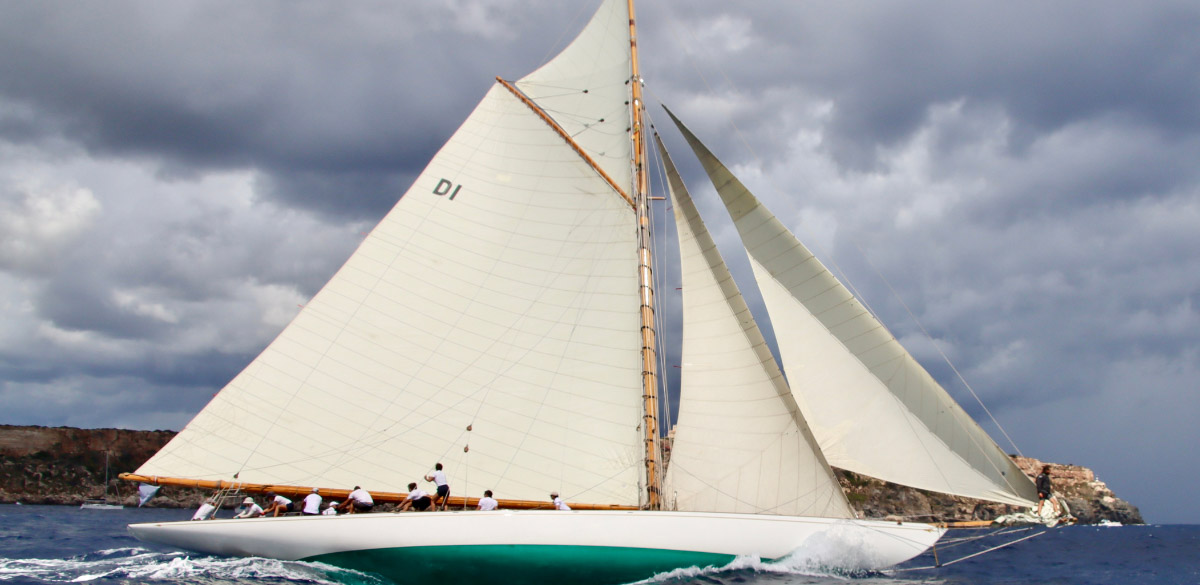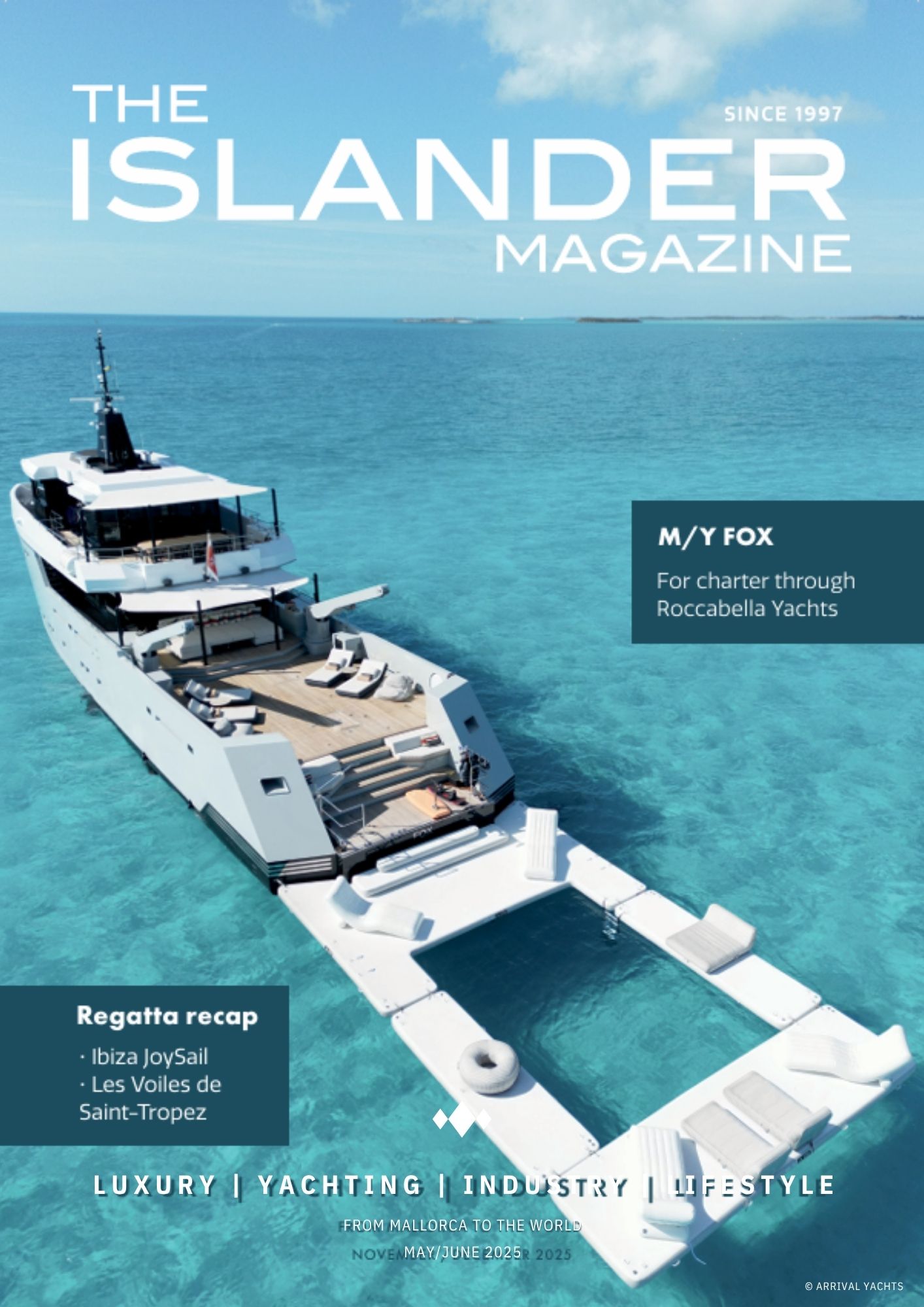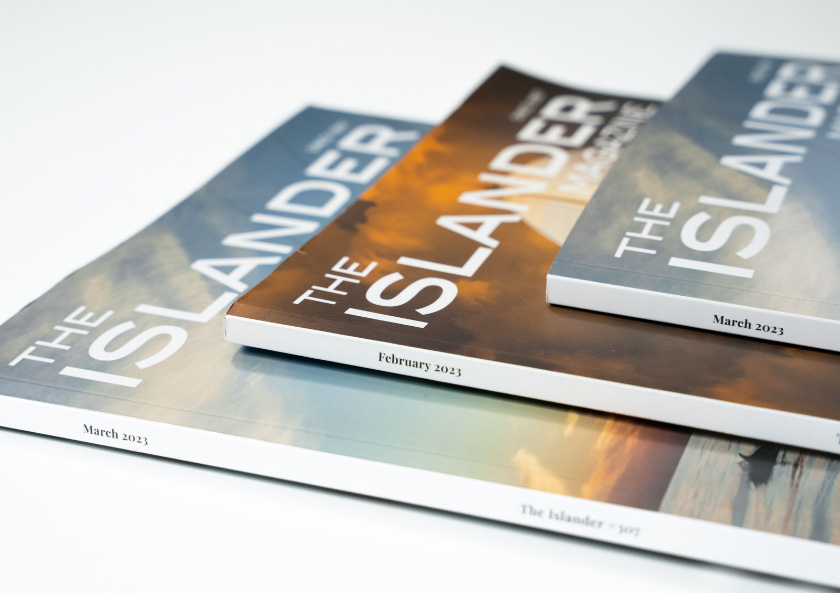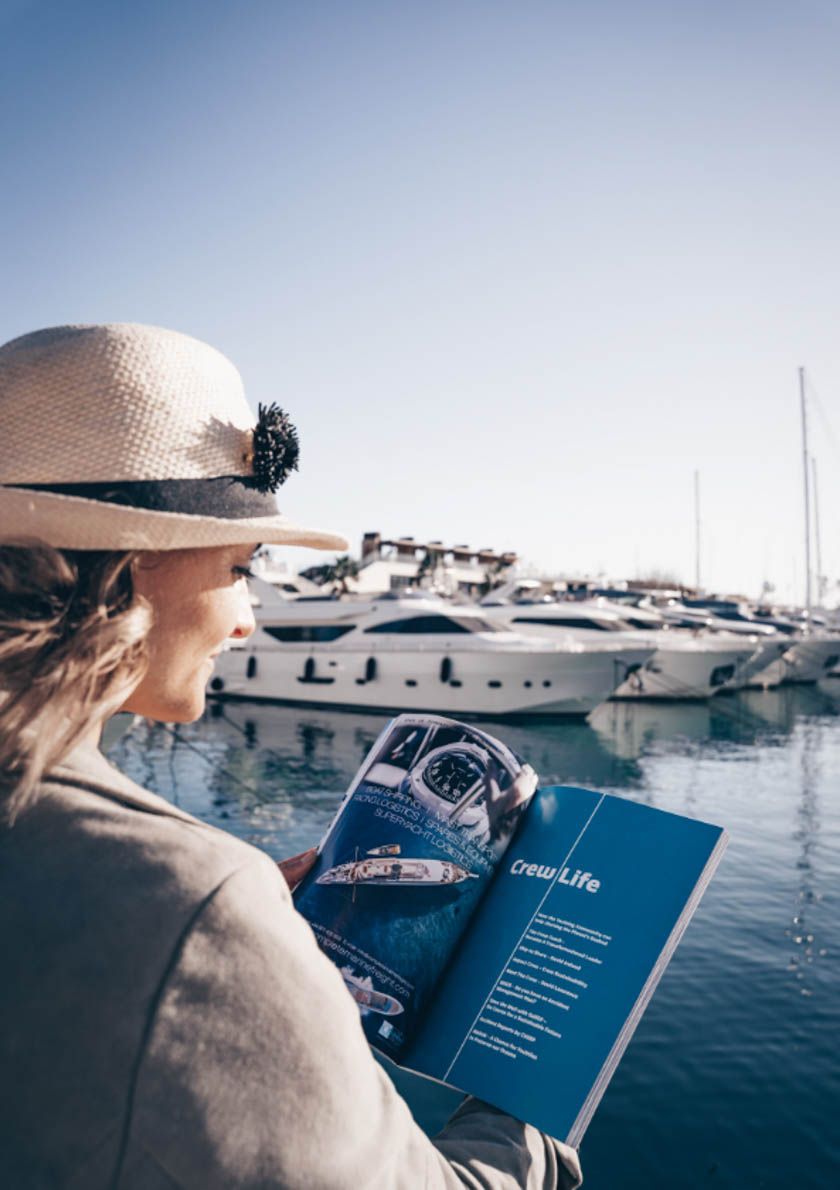An interview with Captain Dan Poljšak of Mariska 1908 and the yacht’s manager, Manon Bajart.
The 15 Meter Class is legendary, and Mariska 1908 is the oldest of the fleet. Anja Eckart explores the significance of this famous class and the exceptional vessels for The Islander magazine.
First, some general information about Mariska 1908 and William Fife:
Mariska is a stunning William Fife Design. A wooden gaff cutter, and the second ever built, she was launched in 1908 in Scotland. Cutting-edge at the time of her construction, Mariska was owned by AK Stothert, recognized as one of the best yachtsmen of the Edwardian era. A total 20 of these magnificent 15m Class yachts were built to the International Rule between 1908 and 1917, representing the peak of racing yachts highly favoured by the aristocracy.
These remarkable ships of supreme beauty participated in grand regattas in the most charismatic ports of their time. Mariska’s initial racing career lasted from 1908 to 1939. Later, she spent nearly 80 years in Sweden under the ownership of the Swedish Royal Yacht Club. Eventually, she was discovered abandoned in Holland after being used as a restaurant and floating home.
Mariska was rescued in 2007, relocated to France and underwent an incredibly comprehensive two-and-a-half-year restoration, involving 25,000 man-hours. During this period, the yacht was completely stripped back to bare frames and restored from the keel up, adhering closely to the 15m Class regulations and the original design.
Finally re-launched in September 2009, Mariska won the 15m Class Trophy in 2011, 2013, 2014, 2016 and 2017, also winning the Grand Slam in 2016 and 2017. In 2020, the current owner acquired Mariska, and amde Barcelona her home base. This year, Mariska began racing successfully with her new team, triumphing in the most prestigious regattas.
About William Fife yachts:
In the yachting world, the name “Fife” embodies grandeur, and finest qualities one would expect in a classic yacht, from sheer elegance to superb craftsmanship to top-notch performance. These Fife Yachts are jewels of historical value whose lines are pure poetry still today.
Fun fact: Each yacht has its own emblem, its own iconic golden dragon, carved into the bow of the yacht and extended along the hull as a cove line to the stern, usually terminating in a wheat sheaf. No two dragons are identical, and each is overlaid with real gold leaf.
Presently, only four 15m Class yachts remain:
Mariska 1908 with sail no. D1
Hispania 1909 with sail no. D5
Tuiga 1909 with sail no. D3
Lady Anne 1912 with sail no. D10
To sustain the racing tradition, Manon and Dan chose to reintroduce Mariska 1908 to the classic racing circuit alongside her sister ships.
You are sailing and managing one of the most beautiful classics. How did you find her?
Dan: Actually, the owner found me while searching for a classic yacht! After extensive research, we found Mariska at an auction, bundled with some sports cars. The current owner won the bidding in 2020.
We’ve been running Mariska since then, keeping her in perfect racing condition. It was sad to see her mostly docked in port, unused. She is a racing yacht. That is what she was built for. Manon suggested the idea of re-entering her into classic regattas, and to keep the 15 Meter Class alive.
Manon: We proposed to the owner that we take over the management of Mariska. The 15 Meter Class currently consists of only three yachts for racing, until Hispania returns to the circuit. Preserving this tradition is worthwhile, and we aim to offer other sailors the experience of sailing in this class. Hence, we conceived the idea of conducting training sessions aboard Mariska, allowing sailors to learn and race in the most prestigious regattas. The owner approved our proposal.
What does it take to sail a yacht like Mariska?
Dan: Sailing on Mariska is the purest form of the sailing experience. And she is a pretty complex machine. It’s akin to sailing as it was a century ago – no winches, solely manpower. We maintain a permanent crew of four on board. During races, we have a minimum of 18 and up to 24 sailors.
In match racing against the other 15 meters, Lady Anne and Tuiga, one might expect you to helm. Why does someone else steer during the regattas?
Dan: Steering the boat is pretty simple, but Mariska is a demanding boat, she requires 100% of my concentration. I’m responsible for ensuring everything works perfectly, consistently monitoring wind conditions, sails, other boats, and the best course of action. It needs perfect timing and preparedness from everyone for manoeuvres, crucial in winning match races.
And the guests sailing with you – do they need to be experienced classic sailors?
Manon: No, absolutely not. During the races, we have a minimum of six skilled sailors on board, allowing a ratio of one experienced sailor per two or three guests. We conduct training sessions before the race, assigning tasks according to each person’s knowledge and skills. Dan divides the boat into sections and roles, and either Dan or I assist whenever needed. This is how guests learn, improve, and enjoy themselves.
Dan: Once you get the concept of sailing Mariska and the commands for each task, it becomes relatively easy.
Manon: Additionally, we encourage female sailors to come sailing with us. I personally prefer a balanced mixed crew onboard; the energy is so much better.
How do you maintain Mariska?
Manon: We handle all the work ourselves. Dan is a highly skilled carpenter who designed and built his first boat, Schkrga, at the age of 12. Without a workshop or tools, he started building the wooden schooner Cassiopeia at 16, and even designed the sail plan. By the age of 21, he owned his own 8m schooner.
Dan: It runs in the family. I grew up with boats. My sister Lara and I began sailing in wooden optimists in Slovenia. Every weekend, we would drive to the coast for sailing. As I wanted to take friends sailing, I needed a bigger boat. The building process of Cassiopeia was a valuable experience.
Manon: As the project manager, I handle all the logistics. To cover the costs of Mariska’s maintenance, we offer sail training on a daily basis or for an entire regatta. Besides the classic regattas like Menorca, Saint Tropez, or Imperia, we’ll also offer trips during the America’s Cup in Barcelona next year. So, join us for a good cause and come sailing for a once-in-a-lifetime event!
Would you recommend a company team event onboard?
Manon: Yes, absolutely. Communication and teamwork are vital for successfully racing the boat. Onboard, the team is compelled to work together, unlike their usual daily work life where everyone is often occupied with their own tasks. We frequently witness a change in dynamics after a few days of sailing. People support and encourage each other, developing stronger relationships and growing as a team. We’ve received overwhelmingly positive feedback.
Which were your favourite regattas this year?
Manon: It’s difficult to choose, but I’d say my favourite regatta was in Mahon, Menorca. It was a spectacular event with a stunning fjord and an interesting sailing course that required tactical decisions based on the mountainous terrain and a finish line in port. Additionally, Les Voiles de Saint Tropez is exceptional. It’s the largest regatta of the year and the closing one. We have some impressive boats in our category like Elena of London, Naema, and Puritan, alongside our class sister ships Lady Anne and Tuiga. Sailing next to these beautiful classics is a pleasure, and the atmosphere in the port, with all the events and having both sister ships nearby, is lovely.
What’s next?
Manon: Dan and I are currently preparing Mariska for the winter. We plan to start varnishing in spring, depending on the weather, and then return her to racing mode. Next year’s most significant event will be the America’s Cup in Barcelona. We’ll be involved as a spectator boat, organizing day trips and events for our guests, including match racing with Halloween.
Next year’s regatta schedule is intense, and we’re eagerly looking forward to it. We’ll begin with Les Dames de Saint Tropez in April, intending to participate in ten to eleven classic regattas, culminating in Les Voiles de Saint Tropez.
This year was a training year for us. Next year will demonstrate whether Mariska and our project will achieve success!





























0 Comments